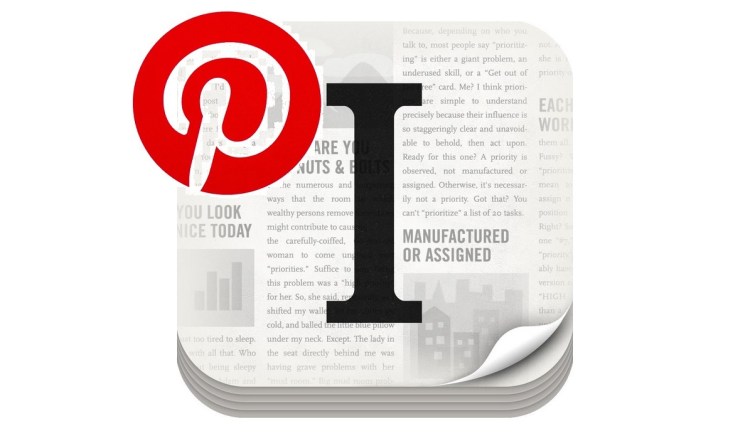Want smarter insights in your inbox? Sign up for our weekly newsletters to get only what matters to enterprise AI, data, and security leaders. Subscribe Now
News of Pinterest’s acquisition of Instapaper received a bittersweet reaction from users of the latter. Many fear an imminent change in the level of the team’s dedication and a drop in customer service, leading to eventual shut down.
Pinterest and other giants have a history of “killing” apps they acquire. This was, for instance, the fate of a former competitor of Instapaper — Iceber.gs — a visual bookmarking startup that shut down right after Pinterest bought it.
The Pinterest - Instapaper deal does not come as a surprise, not only because the two are both in the field of organizing content, but also because of Instapaper’s freemium business model. Given the generosity of the free product offering, users had little incentive to pay for it. An acquisition seemed a highly likely option to capitalize on the investments and the time spent building and maintaining Instapaper.
Instapaper’s fate would have been different had the product been a strictly paid one. As would have many of the other services that shut down because they were free but did not get acquired. Springpad — another player in the bookmarking field — is one example. It closed its doors in 2014, despite reportedly having a multi-million user base.
Having a free product allows you to grow very fast and to show a compelling story to potential investors. But with the speed and the investors, you lose control — over the product you are building, over who you are building it for, and over its ultimate fate.
Charging for a service might slow down growth, but it keeps founders grounded and in touch with the product and its users. It enables them to focus and make educated decisions that, in the end, could determine whether the service survives or not.
And there are more reasons paid models have a better chance at survival:
- Introducing a paid plan is the perfect reality check . Only if people really need your product will they pay you for it. And if they don’t, it’s best to find this out sooner rather than later and adjust.
- As you charge money for your core product, you focus all your sales and development efforts on it rather than on the endless search for money elsewhere — investments, advertisements, or potential buyers.
- Your deadlines, deliverables, and ambitions are determined by you together with your users rather than by investors, who have an agenda and goals of their own, often misaligned with yours.
Negative experiences associated with the decline of some of the great free services could very soon change the perception of the paid business model. Many users are already realizing that by paying, they in fact “buy” the focus of the founders, a cleaner (ad-free) product, and a contribution to its long term evolution.
If we see a major shift from free towards paid B2C products, it should bring a lot of health to the industry and, in the end , satisfaction and value for both startup founders and their users.
Nina Zavrieva is CEO of Channelkit. She previously worked for the Boston Consulting Group, Rocket Internet, and did a lot of freelance consulting work.


